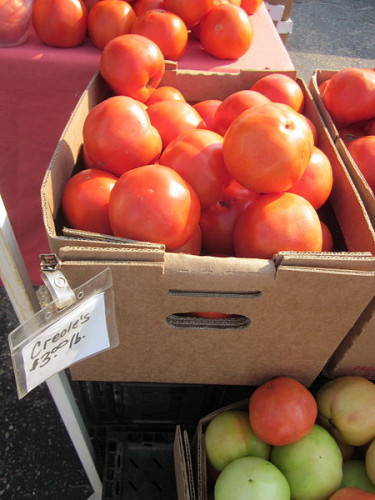
Bettye Anding
Three or four springs ago I planted four or five tomato plants along the driveway side of our house. It was my first attempt at agriculture, and I’ve already told you that I’m no gardener.
But those plants thrived; I even supported them with the wire “cages” you buy at hardware and garden stores, watered them faithfully, and picked off the “suckers” as instructed by the manual.
I had a fairly good crop; of course, nothing like my sister and her husband get every year from the garden up the hill from their house in rural Alabama. When I’ve visited in spring and early summer, the floor of their dining room is covered with newspaper pages upon which the tasty tomatoes rest and I go home with at least two dozen in a bag. One year I suggested that she build herself a little tomato stand for the side of the highway, but she just turned up her nose at me.
I got to thinking about this when I read in the paper that it’s that delicious time of year again here — and, no, I’m not talking about Thanksgiving with its pecan and sweet potato pies or July Fourth with its watermelons and homemade ice-cream. The fruit of this month is the Creole tomato, and it’s been a long winter, folks, for those of us enamored of this seasonal delicacy brought to New Orleans from the West Indies.
The 2014 crop will be celebrated here on Saturday and Sunday at the Creole Tomato Festival in the French Market, and somewhere around the same time
the town of Bunol, Spain, the first European country to get tomatoes from the New World, will be observing La Tomatina, a festival centered on an enormous tomato fight. What did the people of Europe feast on (or throw at bad actors and worse politicians) before the Spanish conquistador Hernan Cortes brought this American “berry” home?

The first Creole tomatoes of the season will be auctioned off this weekend at the French Market. (Photo by Infrogmation of New Orleans)
The tomato is the edible, often red fruit/berry of the nightshade Solanum lycopersicum, commonly known as a tomato plant. Also according to Wikipedia, the species originated in the South American Andes, and its use as a food began in Mexico, and spread throughout the world following the Spanish colonization of the Americas. Cortes may have been the first to transfer the small yellow tomato to Europe after he captured the Aztec city of Tenochtitlan, now Mexico City, in 1521, although Christopher Columbus could have taken them back as early as 1493.
At The French Market Creole Tomato Festival you’ll find the freshest specimens of the season and also booths offering the savory berry and fresh vegetables for sale, cooking demonstrations, live music and the traditional Creole tomato parade. The food booths will feature local favorites including fried green tomatoes, bloody Marys made with Creole tomatoes, crawfish pies, crepes, salads and even blooming onions served on beds of tomatoes.
The premiere event at the festival for the famous chefs of New Orleans is the auctioning off of the first-picked Creole tomatoes of the season. And life-size tomatoes will be strolling along in the area and offering festival-goers hand-held fans shaped like tomatoes. Can you relish that?
I should tell you while I’m winding up here that the second tomato “garden” I planted at our house gave me a dud of a crop. Discovering halfway through the growing season that cherry tomato plants had mistakenly been purchased, I didn’t give them nearly as much TLC as they required. I harvested only 22 tiny tomatoes and grumpily retired from the farming business.
 NOLAbeings Multimedia artist Claire Bangser created NOLAbeings as a portrait-based story project that marries...
NOLAbeings Multimedia artist Claire Bangser created NOLAbeings as a portrait-based story project that marries...  Voodoo in New Orleans: Reviving history: New Orleans fortune telling This article takes a deep dive into the history of Voodoo in New Orleans, its hybridization with Catholicism, and its present-day place in the city's culture. The author visits fortune-tellers in the French Quarter, using their guidance as a tool for introspection rather than a deterministic predictor of the future. Through her experiences in New Orleans, the author feels a mystical connection to both the past and the future.
Voodoo in New Orleans: Reviving history: New Orleans fortune telling This article takes a deep dive into the history of Voodoo in New Orleans, its hybridization with Catholicism, and its present-day place in the city's culture. The author visits fortune-tellers in the French Quarter, using their guidance as a tool for introspection rather than a deterministic predictor of the future. Through her experiences in New Orleans, the author feels a mystical connection to both the past and the future. 